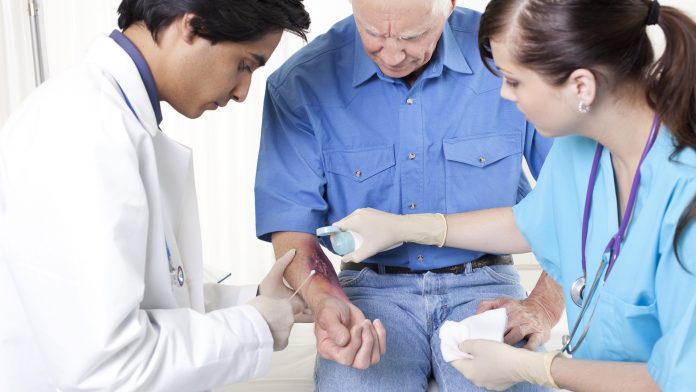
New research suggests a combination of betadine and silver colloidal gel could eliminate bacteria associated with wound infection.
A recent study published in the American Journal of Infection Control (AJIC) has suggested that betadine and silver colloidal gel could be more effective when combined than they would be if used separately. These findings may help healthcare professionals treat serious burns and wound infections. Large burns and lesions are highly susceptible to wound infection, and despite advancements in wound treatment, infection remains a serious issue.
“Wound infections continue to be a significant challenge for medical professionals and patients, leading to increased morbidity, mortality, and healthcare cost every year,” commented Linda Dickey, president of The Association for Professionals in Infection Control and Epidemiology.
How betadine and silver colloidal gel treat wound infections
Betadine and silver colloidal gel are both topical antiseptic treatments that are commonly used to treat wound infections. Open wounds and burns are vulnerable to microbial invasion, microbial colonies can then attach themselves to the wound’s surface and prevent healing. Previous studies have shown betadine and silver colloidal gel to be ineffective against certain forms of bacteria. Past research has also suggested that silver colloidal gel uses a different mechanism of killing bacteria than betadine, implying a combined usage may be more effective against wound infections.
How the research was conducted
Research from the Texas Tech University Health Science Centre has recently been conducted into the effects of betadine on wound infection.
“Our study is the first to systematically evaluate the use of betadine alone as compared to the combination of betadine and silver colloidal gel to eliminate bacteria and the growth of biofilms,” explained Jonathan Kopel, PhD student and author of the study. Kopel and his colleagues tested solutions of 5% silver colloidal gel alone, 5% betadine solution and the combination of 5% betadine and silver colloidal gel to measure their effectiveness on bacterial strains. The team of scientists at Texas State University then analysed the remaining bacteria left on each strain.
The results of Kopel’s research revealed that the combination of the two components worked more effectively than either component alone for wound infections. The 5% combination of betadine and silver colloidal gel provided 100% inhibition on all five bacterial strains tested. The 5% betadine alone solution provided little or no effectiveness against the P. aeruginosa strain, whilst the silver colloidal gel failed to inhibit 100% of bacterial growth against the K. pneumoniae strain. Remarkably, the combined solution killed 100% of the K. pneumoniae strain.
“This study provides important new findings that could help improve infection prevention and treatment to reduce this burden,” said Dickey. It is hoped this study will help to improve the treatment of wound infection.
























